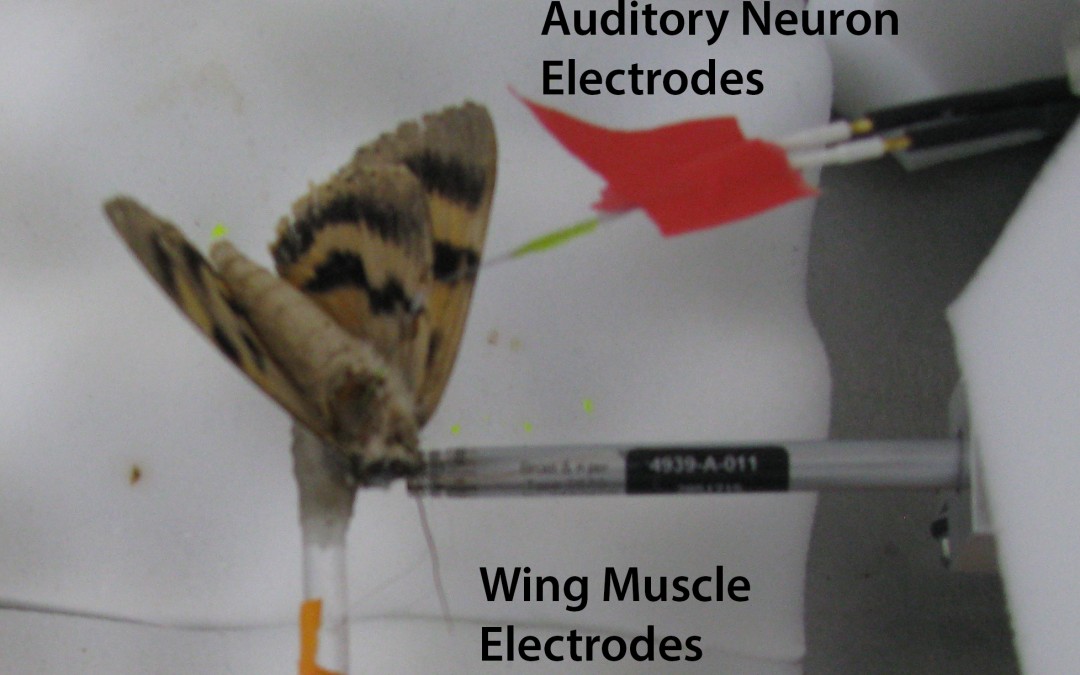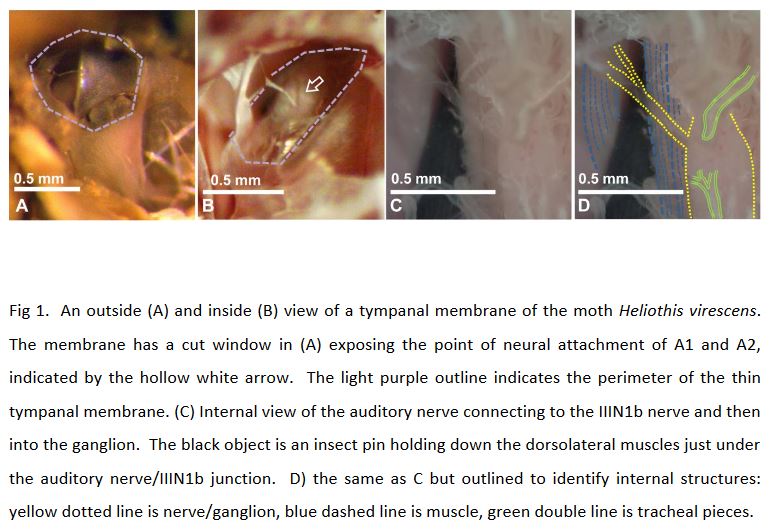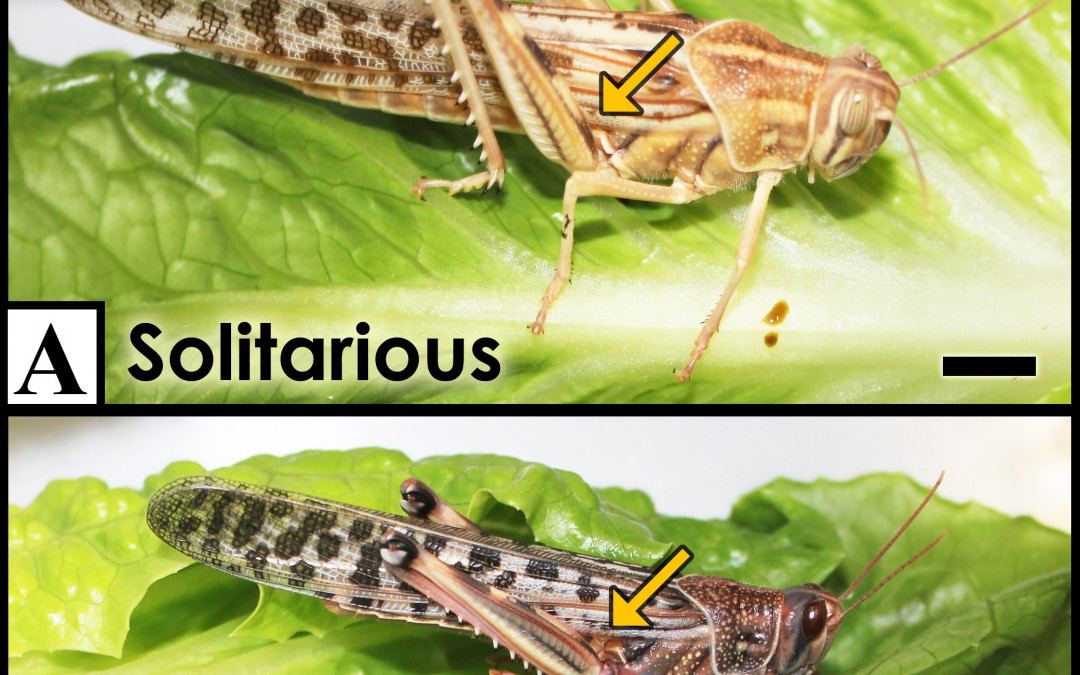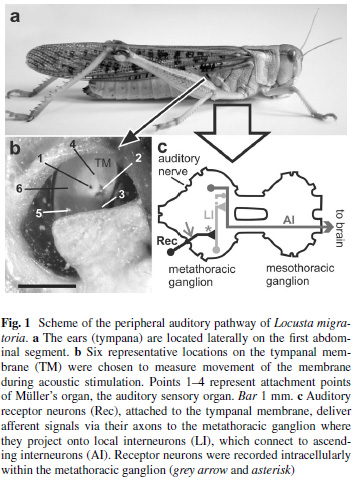
by Shira | Feb 2, 2018
Abstract: Animals co-occur with multiple predators, making sensory systems that can encode information about diverse predators advantageous. Moths in the families Noctuidae and Erebidae have ears with two auditory receptor cells (A1 and A2) used to detect the...

by Shira | Mar 21, 2017
The ear of the noctuid moth has only two auditory neurons, A1 and A2, which function in detecting predatory bats. However, the noctuid’s ears are located on the thorax behind the wings. Therefore, since these moths need to hear during flight, it was hypothesized...

by Shira | Oct 9, 2016
Insects display signs of ageing, despite their short lifespan. However, the limited studies on senescence emphasize longevity or reproduction. We focused on the hearing ability of ageing adult locusts, Schistocerca gregaria. Our results indicate that the youngest...

by Shira | Oct 1, 2014
Locusts display a striking form of phenotypic plasticity, developing into either a lone-living solitarious phase or a swarming gregarious phase depending on population density. The two phases differ extensively in appearance, behaviour, and physiology. We found that...

by Shira | Jun 29, 2014
Poikilothermic animals are affected by variations in environmental temperature, as the basic properties of nerve cells and muscles are altered. Nevertheless, insect sensory systems, such as the auditory system, need to function effectively over a wide range of...







Recent Comments